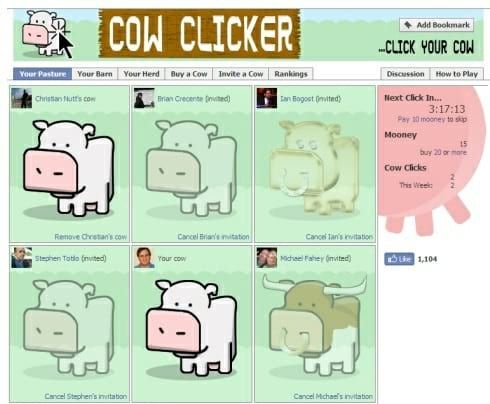Gamification: State of art
Since 2010, gamification has been a hot topic. Worshiped or hated, everybody talks about it. The subject has been discussed previously on our blog, from both a technical and a marketing point of view (read the articles: I’ll write code that writes code for food and Gamification: let’s play). Friendly reminder for those who have missed it: gamification is the use of game play mechanics for non-game applications. Its implementation results in increased loyalty and engagement from the users. In France we start talking about it but initiatives are scarce. The first one to cross my mind is MobExplore, which is generally described as “The French SCVNGR”. They both are mobile applications enabling to create scavengers or other types of games and challenges at specific places.
To understand what is really happening in the gamification’s world, we have to take a look on the American side and focus on the speakers, the providers and the skeptics.
The speakers

In the US, where gamification was born, the theory is mainly supported by Gabe Zichermann, speaker, co-author of the book Game Based Marketing and creator of a famous blog about gamification. « What gamification does is allow marketers to focus on what they know best — convincing consumers to take loyalty and purchasing actions — using a powerful toolkit of engagement gleaned from games. Armed with a new understanding of what makes people tick, and how to wind them up, marketers can build experiences that are enduring and engaging. » If you are interested by more insights on what gamification really is and on having various examples of it, he develops his point in this video.
Jane Mc Gonigal, author of the book Reality is Broken, preaches enthusiastically for the idea that video games - especially serious games - can help people develop incredible skills. During her TED session she cites four positive impacts commonly felt when playing games: urgent optimism, social fabric, blissful productivity and epic meaning. She explains that gamers are better prepared to react fast, solve problems and act as teams when needed. She goes even further and says that playing games could help save the world. At first her point seems extreme but she makes us think about the use of game mechanics – and especially the use of serious games - in education field for instance. She was recently proven right as the players of the game Foldit helped scientists to produce an enzyme's model that could be of major use in the research for anti-Aids drugs.
Seth Priebatsch, Ninja Chief at SCVNGR, is another enthusiastic speaker. He describes SCVNGR’s business during a TED session, where he exposes the following idea: the previous decade was the one of social media; the current decade we are living in represents the game era.
To end on a humoristic note, Jesse Schell, founder of Schell Games, has also talked about gamification during a session. He describes a totally gamified world where all our actions would be rewarded by points and where you would start your day earning points for brushing your teeth! Crazy…
The providers

Beyond theory, Americans are taking actions. GSPs (Gamification Service Providers) like Big Door, Badgeville, Bunchball or IActionable are becoming increasingly famous. Here are some examples of their interventions:
BigDoor and DevHub: DevHub is a website builder which proposes a free hosting service. They needed to better monetize user interactions and encourage customers to buy additional features. They were also seeking to create a more engaging experience for their users. The solution proposed by BigDoor consisted in creating virtual currency that could be either earned or bought. User actions were rewarded by virtual money, which helped increase motivation and engagement. When virtual currency earned was not sufficient, customers could always use real dollars to obtain it and therefore the desired features. Another aspect of the gamification process was to create a leaderboard which promoted the site creation winners, giving them recognition among other users and increasing all the competitors motivation. The results were immediate: DevHub noticed an increased engagement rate of 300% and in three months, revenue from virtual goods grew to 30% of overall revenue.
Badgeville and Bluefly : «Bluefly will use Badgeville to reward fashion-savvy shoppers for watching videos, creating wish lists, writing reviews, and reading blog posts, as they explore and interact with various elements of the site. The game will offer badges to players that highlight their status and draw attention to their fashion credentials within the Bluefly community. As players earn higher badges, they will receive rewards such as early access to products and special deals and discounts. »
Bunchball and Playboy : “Gamification is the DNA woven throughout Playboy’s latest digital ventures to develop and engage our audience,” said Greg Johnson, Vice President, Digital Ventures at Playboy Enterprises, Inc. “Since launching Playboy’s Miss Social Facebook application in December 2010, we have over 80,000 active users interacting with the program. We’re seeing over 85% of the audience re-engage and 60% growth in revenue month over month. Bunchball’s powerful analytics tools provide us critical insights into user behaviors and what drives our audience. The Nitro platform’s flexibility enables us to test, iterate and optimize in real time, which is critical to the success of our business. »
Those are only a few examples among the numerous initiatives being undertaken in the gamification world. Gartner has published predictions about the trend toward gamification: “By 2015, more than 50 percent of organizations that manage innovation processes will gamify those processes, according to Gartner, Inc. By 2014, a gamified service for consumer goods marketing and customer retention will become as important as Facebook, eBay or Amazon, and more than 70 percent of Global 2000 organizations will have at least one gamified application.”
Skeptics

Margareth Robertson has written a well-known article - Can't play, won't play – where she mainly criticizes a growing phenomenon: the pointsification. From her point of view, what is called gamification today is simply a system rewarding actions with points. « Gamification is the wrong word for the right idea. The word for what’s happening at the moment is pointsification. There are things that should be pointsified. There are things that should be gamified. There are things that should be both. There are many, many things that should be neither. »
Kathy Sierra, the famous game developer, has pointed out the bad use gamification in a comment to Gabe Zichermann’s article. « If a company uses gamification to increase their customer engagement based purely on deals/pricing/coupons/bargains, etc. then sure, it is a fine and appropriate use. But for those who hope to compete on something of value beyond "lowest price / best deal", then gamification may do far more harm than good. »
I would like to end on a funny criticism of social games by Ian Bogost, creator of the CowClicking : « You get a cow. You can click on it. In six hours, you can click it again. Clicking earns you clicks. You can buy custom "premium" cows through micropayments (the Cow Clicker currency is called "mooney"), and you can buy your way out of the time delay by spending it. You can publish feed stories about clicking your cow, and you can click friends' cow clicks in their feed stories. Cow Clicker is Facebook games distilled to their essence. » (Any resemblance to a real game is of course purely coincidental!)
Most of the skeptics criticize the bad use of gamification and not the intrinsic concept itself. As gamification is becoming trendy some are tempted to benefit from its popularity without understanding the global stake. Adding a points system to a website will never enhance the user experience and yet this is what gamification is all about: providing a meaningful and fun experience to the players.
In a next article on this topic we will analyze gamification in HR: why and how is gamification coming to our offices? Can the American models fit the French businesses?